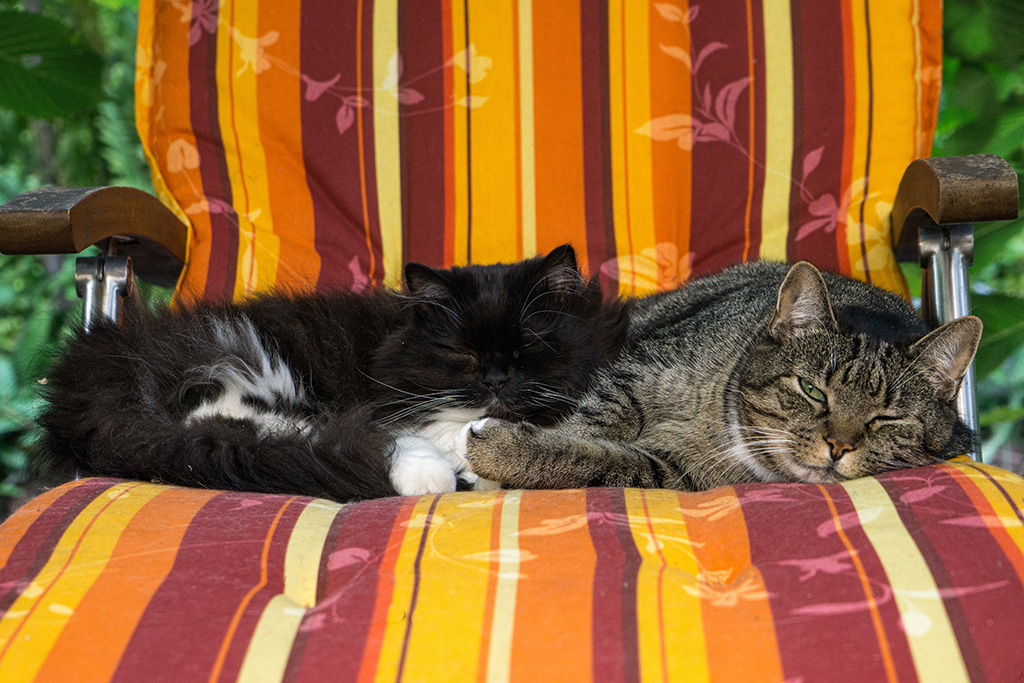Where does your cat sleep?
In what position does your cat sleep?
These can vary.
Where and how a cat sleeps depends on certain factors that say a lot about your cat and its state of mind.
Take a closer look!
– What does his sleeping behaviour say about your cat right now?
Your cat sleeps a lot? That’s normal
SDoes your cat sleep a lot?
Is she a real sleepyhead?
Don’t worry – she’s not sick; that’s normal for cats! Feeding, grooming, sleeping is a perfect combination for cats.
It may seem rather lethargic at first glance, but it’s pretty clever!
After all, the cat’s body goes into rest mode exactly when it needs to, for example, when it’s time to digest in peace! After all, the best way to do that is to sleep, “after eating you should rest or have 40 winks”.
Miezen Kitties wisely choose to rest.
How much do cats sleep?
Adult cats sleep 12 to 16 hours a day, kittens or seniors even more, outdoor cats a little less.
That’s quite a lot when you consider that a cat – just like you – only has 24 hours a day!
Isn’t that a waste?
No! Because cats need enough sleep to recharge their batteries.
A hunter’s life uses up a lot of energy: sneaking up, lying in wait and then pouncing. It all takes a lot of energy!
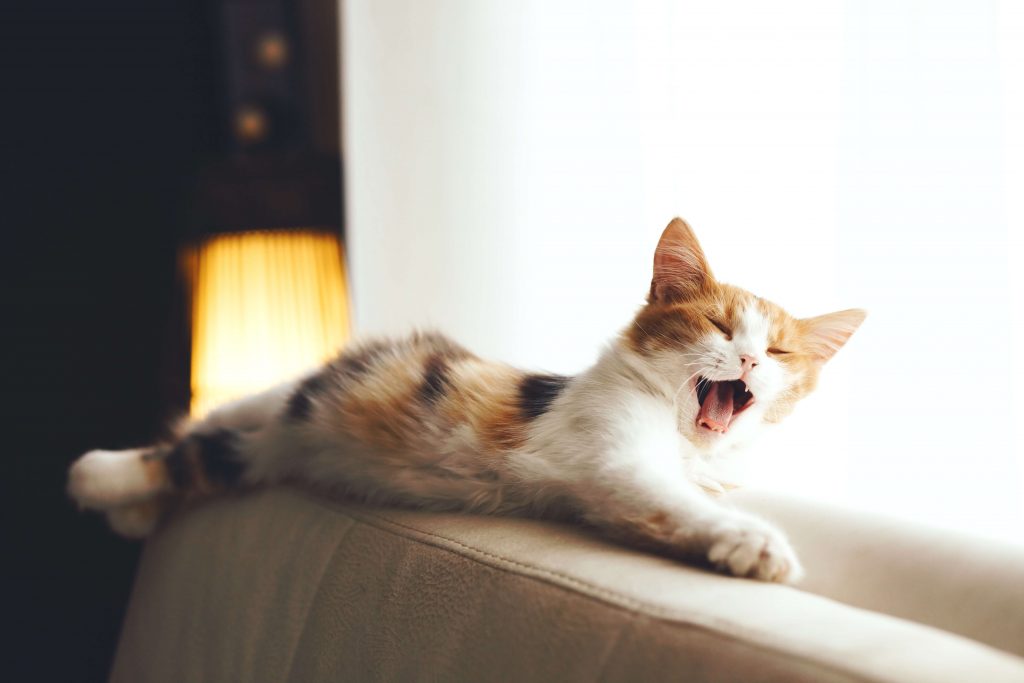
Why do cats sleep so much?
Cats are athletes, with finely trained bodies.
They can take off explosively from a standing start and sprint at lightning speed!
Prowling, pouncing and holding onto prey, climbing and jumping all need a lot of energy. Afterwards, the body has to recover.
Without recuperation, the body will not be able to perform as well as it needs to during the next hunt.
Sleeping is not only important for your cat’s physical condition, but also for its emotional well-being:
Like us, cats process certain experiences in their dreams.
When do cats sleep?
Your cat has a completely different biorhythm than you.
When you go to bed or are fast asleep, s/he gets going!
When the light changes early in the morning or in the evening, that’s when s/he becomes active. Outdoor cats then go out and hunt.
It makes sense, because the animals your cat hunts are also on the move.
So at this time of night, your cat has a better chance of catching juicy prey!
Indoor cats often adapt to the life of their owners.
However, the sleeping rhythm your cat prefers also depends on the time of year, its hormonal balance or metabolism. Cats can be quite flexible and sometimes adjust their sleeping times.
Cat sleeping places
“Kitty kitty kitty?!” – but no furry friend in sight?
Cats often choose the most curious hiding places. They squeeze into the tightest nooks and crannies – there are no taboos.
A cat’s sleeping place has to be safe: that’s priority number 1 for cats!
And, once again, there are several good reasons why this is important. When cats want peace and quiet, they retreat to a secure place – ideally with a view over their territory and escape routes in case it’s “I’m off then!” Offer your cat several places to sleep – cosy nests and resting areas, preferably at different heights.
In addition, your cat will also no doubt choose his or her own sleeping spots.
Where do cats prefer to sleep?
Imagine you had to sleep near the motorway – would you easily fall into a deep sleep? At some point you get used to constant noise. Your cat is like you. She prefers to sleep where it is nice and quiet, then she can slip much more smoothly into dream land. Sleeping places for cats should therefore in a place far from hustle and bustle and constant foot traffic! Protect your cat too from external elements: away from draughts, and in an environment that’s neither too warm nor too cold.
Make sure she has safe sleeping areas up high. But don’t let your kitty fall off when she’s hunting big game in her dreams!
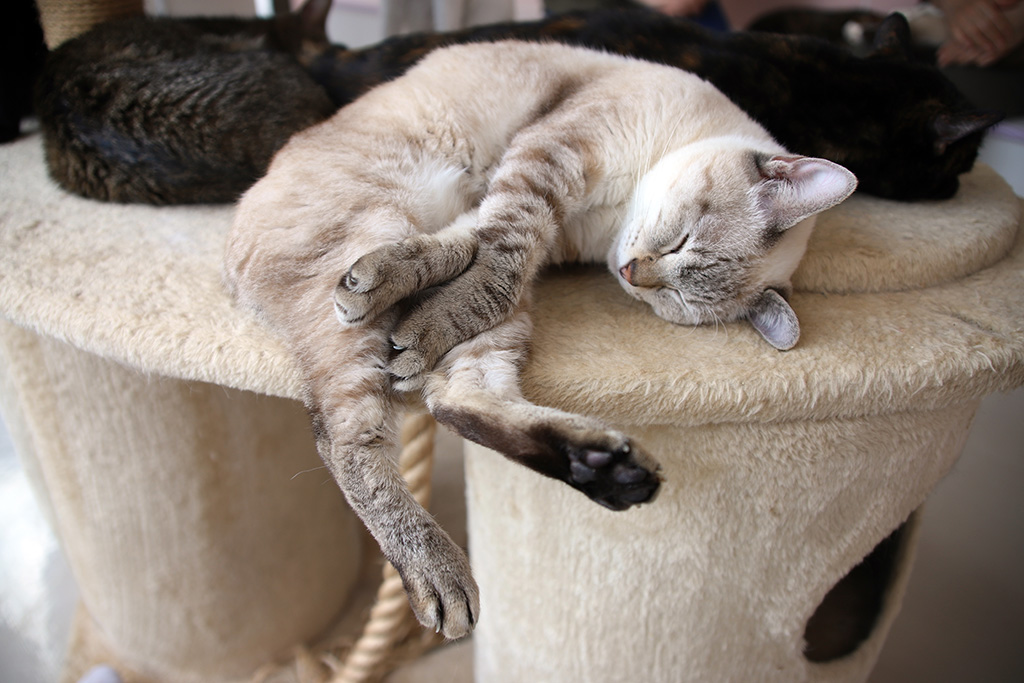
The significance of where cats sleep
Is a cat’s sleeping place significant?
For months the big red armchair was THE place for a nap. Suddenly it’s no longer in demand. Why?
In the wild, cats change their usual sleeping places from time to time. Better safe than sorry!
In this way, they are not surprised by enemies who have discovered their napping spot.
A change of preference, and suddenly a different place becomes the favoured spot for sleeping.
Is that really a comfortable perch for the cat? It doesn’t look like it to us.
But from a cat’s point of view, there are definitely good reasons for this choice.
Cat sleeps on me
The ancestors of your cat were steppe dwellers.
These genes make cats like things cosy and warm.
And when the sun isn’t shining or there’s no heater nearby, your furry friend will gladly curl upon you – a two-legged source of warmth.
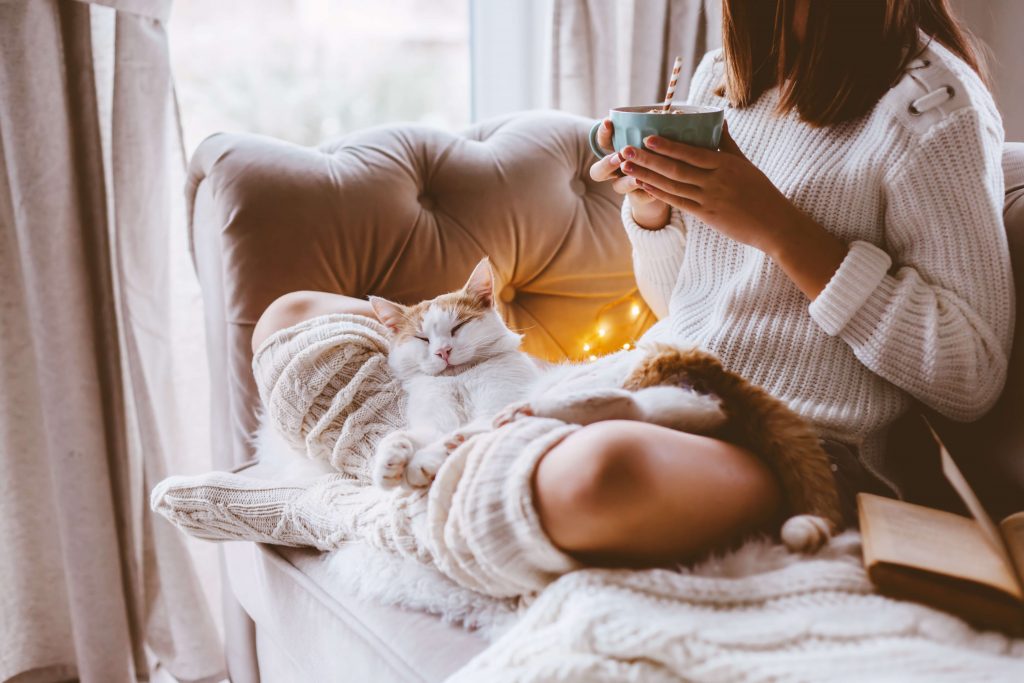
But where a cat settles down for a nap must be safe, with no danger around.
When your cat chooses you as a somewhere to sleep, she trusts you.
If your cat feels well taken care of, you will sometimes have the pleasure of being thoroughly kneaded. Though it’s called ‘milk-kicking’, it is also done by kittens who were bottle-fed.
Cat sleeps in the litter tray
Your cat sleeps in the litter tray?
If your cat does this, there can be different reasons:
1. Kittens do it because sometimes they don’t yet understand what the toilet is for.
2. Does your cat have any health problems? If so, you should see your vet.
3. Does your cat feel stressed by external issues or other cats?
4. Is there nowhere to sleep or retreat where your cat is more comfortable?
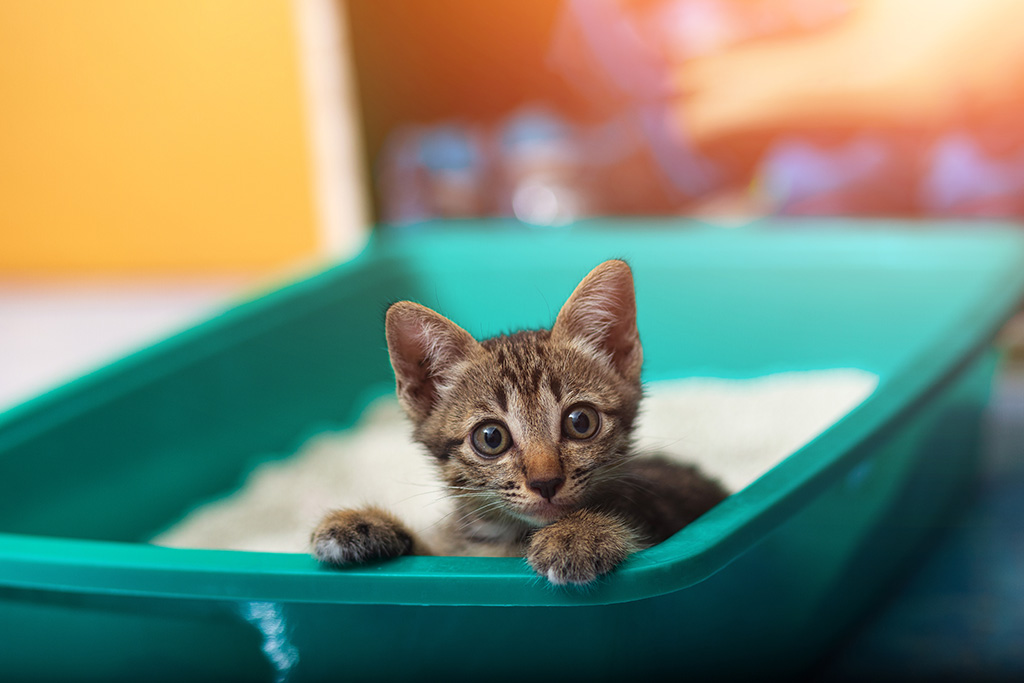
TIP: Get to the bottom of this and offer your cat attractive alternatives. Then the litter tray can once again become the “quiet corner” where cats go.
Interpreting sleeping positions correctly
Does your cat have a sleeping position it always adopts?
Like this or like this?
Completely curled up. Then on its back.
Or stretched out on all fours.
Why, and what does this sleeping position actually reveal about your cat?Does a cat’s sleeping position mean something?
Cat sleeps with eyes open
Does your cat sometimes have its eyes open when asleep?
Bold and foolhardy cats in the wild don’t have a very long life expectancy. Wary behaviour and a “be on your guard” attitude is life insurance. Cats are mindful that dangers may lurk while they sleep. So it’s better not to shut down completely, and stay on “stand by”.
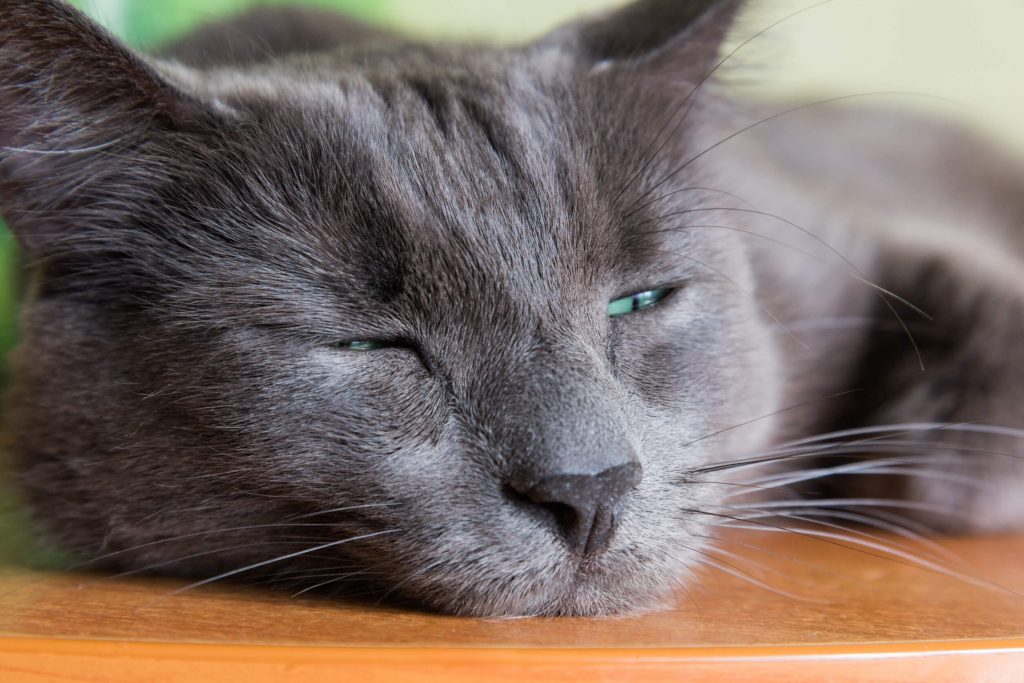
Cats can sleep with one half of the brain; with the other half they are awake:
Often only one eye is open, the other closed.
Cat sleeps on her back
Your kitty lies on her side and shows you some of her belly?
Or does she roll completely onto her back?
Bingo – that’s 100 points for trust!
The belly is a somewhere that she usually meticulously protects.
When your cat trusts you unconditionally, she shows her belly.
It says that your cat feels safe and is completely relaxed.
…and nothing will prevent a restful nap!
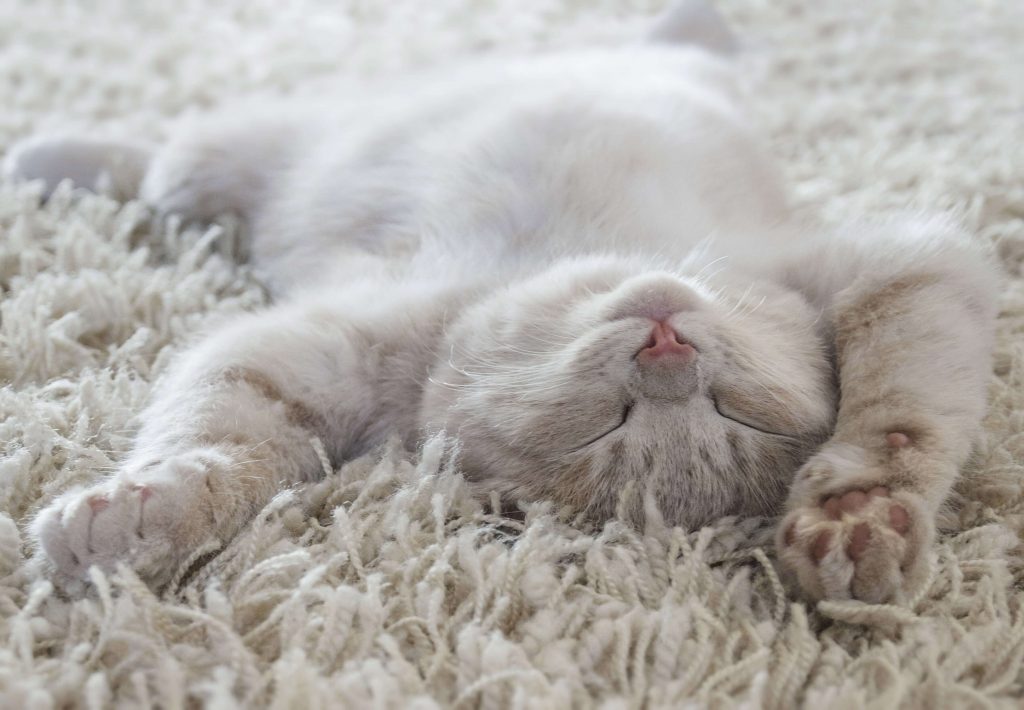
Cat sleeps on his side
Has your cat simply lain down on his side, just as he is?
Then it’s time to “recharge the batteries”. This is the “standard version” of a cat’s sleeping position!
Your furry friend feels safe and can snooze off with peace of mind.
No one will disturb him here.
He is deeply relaxed.
Now he’s about to fall asleep and completely zone out.
Cat sleeps curled up
Curling up is totally natural and ingrained cat behaviour. It makes sense: when your cat curls up, it reduces and protects its surface area.
In this way, cold, rain or storms has less impact. Lying on one side, the body curls up and everything, even the nose and tail, are well tucked away and no longer exposed.
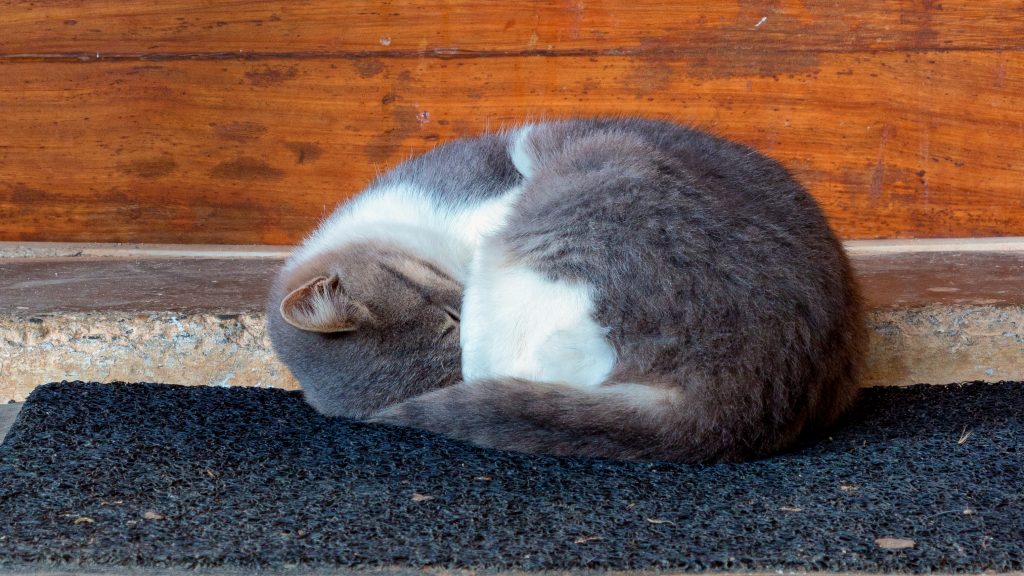
If your kitty sleeps curled up like this, it doesn’t automatically mean her home is too scary. It is simply a way of sleeping that she has in her genes, thanks to her steppe-dwelling ancestors.It’s a tried and testing sleeping position in which a cat feels completely at ease and comfortable.
Make your own cat bed
A cat makes its bed…
And shops also offer a huge selection of cat beds.
But you can also make a cat bed yourself!
To make your cat feel completely comfortably in its bed, you should build one that meets the natural needs of your cat, as well as one that looks good in your home.
You should use natural and good quality materials to make the cat bed. The construction should be solid and safe so that your cat can’t injure itself. The perfect cat bed not only looks good, it also serves a special purpose for your furry friend – ensuring a restful sleep!
Want to make a DIY cat bed, but don’t quite know how to go about it?
Want some ideas?
Building a cat den

Cosy cat dens are very popular.
A high up perch, preferably with a lookout. You don’t even need to buy a lot of accessories – just use things that you no longer need and have to hand.
This could be grandma’s bedside table, storage or toy boxes or an old shelf.
Simply saw or cut a hole in it so that your kitty can comfortably enter her new home. Make sure you sand the edges a little, so that your feline friend doesn’t hurt herself. You can shorten the shelf a little and cover the sides. If you like, give your creation a coat of paint. But be careful – use colours that cats like!
Inside, furnish the sleeping area with a soft cushion. And that’s it.
Let´s dream!
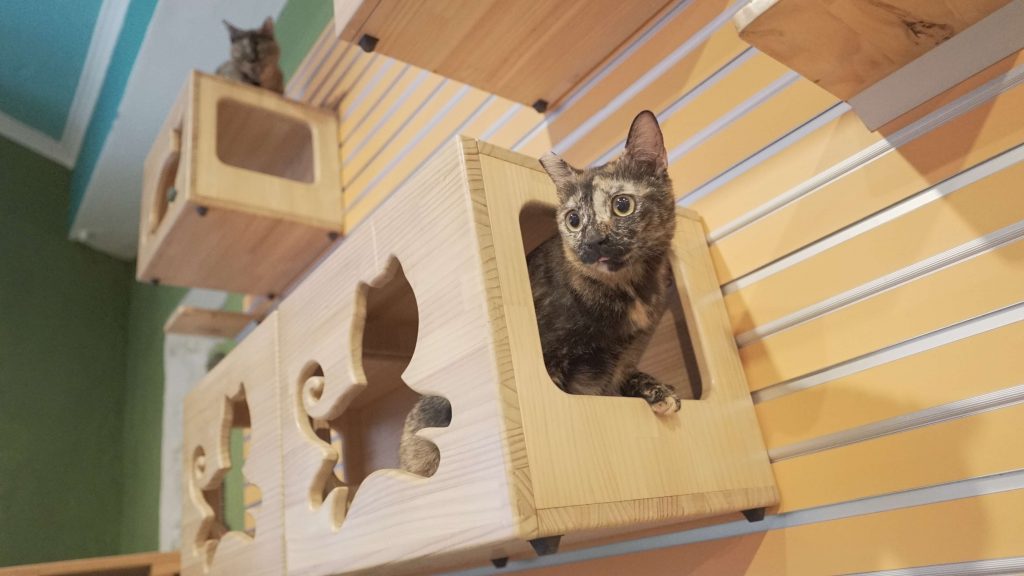
Sewing a cat bed

You want to sew your own cat bed?
Something unique that feels just right because it’s been made by you specially for your favourite feline?You don’t have to be a tip top tailor to do it.
If you know how to use a needle and thread, you can design a cosy cat bed yourself – just the way they’ll like it!
First make a pattern with the dimensions you have in mind. For a slim female cat it will naturally be a smaller cat bed than for a 7 kilo tomcat.
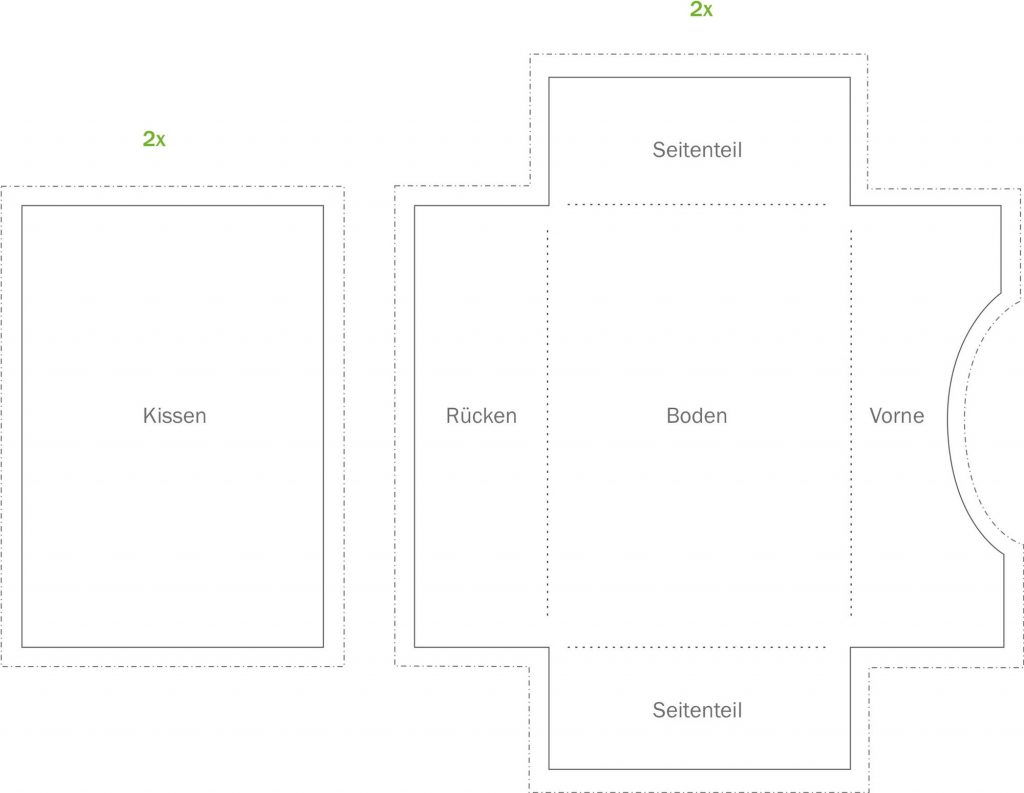
First sew the fabric panels together, add filling and join them together. Finally lift the side panels and bring the edges together to create a box shape.
Go for it – it’s not that hard!
Outside cat bed

An outdoor cat bed?
If you want to put a cat bed on a balcony, it needs be secure.
Nets for balconies are available in different colours and mesh sizes – from very small to very large (20 – 50 mm). Please choose a smaller mesh size to prevent cats from slipping through, as they are quite agile…
It should be a high quality material.
And preferably UV-resistant, and above all tear- and bite-resistant!
Your cat will be very happy that you are thinking about him, as well as setting up a great climbing and lounging area – ideally in a shady corner. Then you can both enjoy the balcony to the full!
